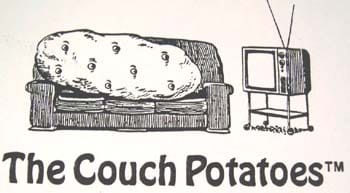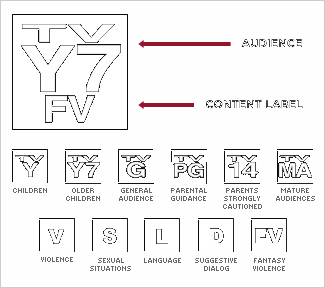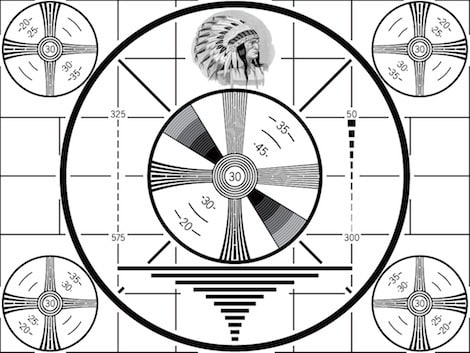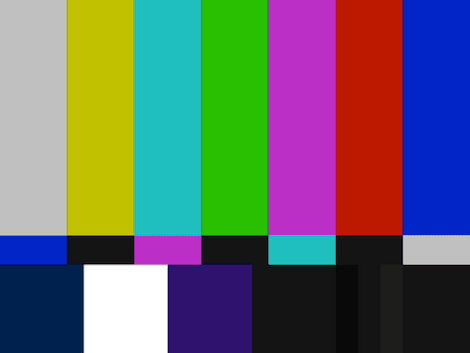Where Do Couch Potatoes Grow?
We're a culture of TV watchers, and like any culture, we've developed a language and visual aesthetic all our own. Let's dig into the origins of and meanings behind some of the most common TV-centric phrases and imagery.
Products are chosen independently by our editors. Purchases made through our links may earn us a commission.
We're a culture of TV watchers, and like any culture, we've developed a language and visual aesthetic all our own. Let's play anthropologist for the next few minutes and dig into the origins and meanings behind some of the most common TV-centric phrases and imagery.
Couch Potato

Commercial television was first broadcast in 1941, and it didn't take long for TV to take off. It beat out radio and books by offering both picture and sound in a completely passive medium, absorbing viewers like never before. It also didn't take long for some people to get into television into a big way: your typical "couch potato".
You may think it has to do with the classic diet of potato chips and more potato chips, but there was actually an entire movement based around laziness. This vegetable analogy was first coined in 1976 by Tom Iacino, who was a sort of anti-exercise activist. His followers were "boob tubers" (tuber is a synonym for potato). The fad really took off when Robert Armstrong first drew a literal "couch potato" and illustrated The Official Couch Potato Handbook.
Read more about the culture of couch potatoes at The Potato Museum.
Boob Tube
As we mentioned, "boob tubers" are those that choose to watch a lot of television. This phrase is almost as old as TV itself. Right now on our site, we review LCD, LED, and Plasma TVs (with or without 3D capability). That's because the Liquid-Crystal Display (LCD) TVs have replaced the old "big-box" TVs, aka Cathode Ray Tube TVs (CRTs).
There's a lot of science that goes into the tube TV, so rather than screw up any explanations, we'll let you enjoy the video above, made when CRT TVs and monitors were all the rage. CRTs are becoming less and less prevalent due to the lower manufacturing costs, space-saving design, and generally superior aesthetics of LCD screens.
V-Chip Ratings

So that's what that white box in the corner is for! The FCC requires any TV 13 inches or larger to have the V-chip installed. Once manually set, this chip blocks out any content that parents or obnoxious roommates deem inappropriate. V-chips have only been a requirement in televisions since January 1st, 2000. If you're upset about this extra level of security, blame Section 551 of the Telecommunications Act of 1996.
This feature is already familiar to those who have children around the house, but some of the ratings can be ambiguous ("suggestive dialog?"). Keep this handy chart around to see why your favorite shows are unfit for tender eyes.
Indian Head Test Card

Monoscopes were used to calibrate old black-and-white TVs, and they could project just one image, the iconic Indian Head test picture. Using this symbol, studios and home viewers alike could tweak their sets and equipment.
When each circles was perfectly round, you were viewing the image at the proper 4:3 aspect ratio. Numbered lines were used to measure resolution and frequency response. The grey bars in the center were used to determine contrast of the picture. Why this particular image was used as a testing standard is still largely a mystery, but it probably has something to do with the relatively high level of detail.
SMPTE Color Bars

Also known as Engineering Guideline EG 1-1990, even this iconic test pattern has gone extinct with the introduction of digital cable boxes and 24-hour programming. Color TVs needed more calibration than the black and white Indian test card offered, so this new system was invented.
The top seven bars are the seven possible combinations of red, green, and blue, all at 75% intensity. The smaller seven bars underneath them are used in conjunction with the taller bars. When calibrated correctly, setting the TV receiver to only filter in the color blue turns the grey, cyan, magenta and blue bars into solid blue. Neat! The "black" bars in the bottom right are actually three levels of black (saturated, just above saturated, and just below saturated).
The tone that typically plays over this test pattern is also used to calibrate the audio. For more information (and how to run the test yourself!), check out this helpful article.
Do you know the history behind any other TV tropes? Share it in the comments below!
